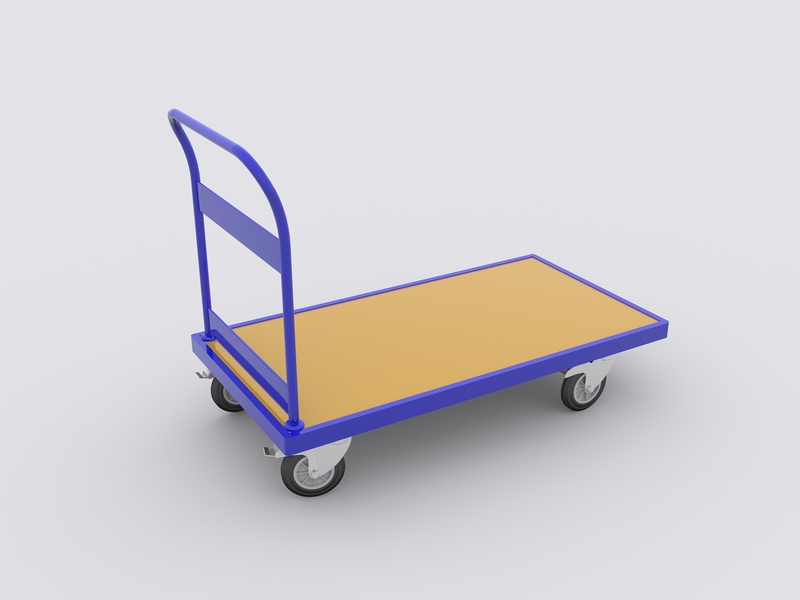Understanding the Concept of Kinetic Lifting
Kinetic lifting has become a cornerstone in discussions surrounding safe manual handling, biomechanics, and occupational health. But what does this concept truly entail? Whether you're an athlete, a warehouse worker, or anyone interested in physical wellness and safety, embracing the principles of kinetic lifting can profoundly change the way you move, lift, and protect your body from injury. In this comprehensive article, we'll delve deep into the concept of kinetic lifting, outlining its significance, mechanics, and best practices for effective application.
What is Kinetic Lifting?
Kinetic lifting refers to the technique of using the body's natural motion and biomechanical leverage to safely and efficiently lift objects. Unlike static lifting, which often emphasizes brute strength and places excessive strain on specific muscles or joints, kinetic lifting utilizes a coordinated sequence of movements--harnessing momentum, gravity, and balance--to minimize energy expenditure and reduce the risk of injury.
The word kinetic is derived from the Greek "kinesis," meaning movement. Therefore, kinetic lifting is essentially about lifting with movement--focusing on how force and body mechanics harmonize when lifting, carrying, or manipulating loads.
Comparison: Kinetic Lifting vs. Static Lifting
- Kinetic lifting: Relies on dynamic body movement, proper posture, and joint alignment. Emphasizes distributing load and using coordinated motion.
- Static lifting: Focuses on stationary power, often leading to overuse of specific muscles and joints, heightening risk of injury.

Why is Kinetic Lifting Important?
Overexertion and improper lifting remain leading causes of musculoskeletal injuries, particularly in occupational settings. The significance of kinetic lifting techniques can be summarized as follows:
- Injury Prevention: Proper kinetic movement reduces the strain on muscles, tendons, and discs, especially the lower back.
- Energy Efficiency: By leveraging momentum and body mechanics, lifting becomes less taxing, allowing for sustained activity.
- Enhanced Performance: For athletes or manual workers, kinetic lifting can lead to increased lifting capacity and lower fatigue.
Understanding and applying kinetic lifting principles isn't only about lifting heavy weights; it's about moving smartly and efficiently in daily life--whether picking up a child or unloading groceries.
The Science Behind Kinetic Lifting
To fully appreciate the practical benefits of kinetic lifting methods, it's helpful to explore the biomechanics involved:
Biomechanics of Movement
- Force Distribution: When lifting kinetically, the force exerted is spread evenly across joints and muscles, reducing excessive pressure on any one area.
- Lever Mechanics: By bending the knees, engaging the core, and keeping the load close, the body acts like a complex system of levers, enhancing mechanical advantage.
- Center of Gravity: Proper kinetic movement keeps the load within the base of support, maintaining balance and stability throughout the motion.
Engaging Multiple Muscle Groups
Unlike static lifting, which might over-rely on the back or arms, kinetic lifting approaches activate the glutes, legs, core, and upper limbs in harmony. This synergistic activation:
- Prevents fatigue in vulnerable muscle groups
- Improves overall muscle tone
- Promotes body awareness and proprioception
Core Principles of Effective Kinetic Lifting
Mastering safe kinetic lifting involves understanding and applying a few fundamental principles:
1. Proper Body Alignment
Keeping the spine in a neutral position and aligning the ears, shoulders, and hips ensures load is distributed safely. Overextending or rounding the back is a common culprit in lifting injuries.
2. Controlled Movement and Momentum
Momentum, when used judiciously, can aid lifting--but wild or uncontrolled movements may cause instability or injury. The key lies in smooth, deliberate motion, avoiding jerking or twisting motions when carrying a load.
3. Engaged Core and Stable Base
Tightening the core muscles and setting the feet shoulder-width apart provides a solid base, enabling maximum kinetic energy transfer without sacrificing stability.
4. Proper Load Placement
- Keep the load close to your body
- Distribute weight evenly if carrying loads in both arms
- Plan your pathway before lifting
5. Breathing and Focus
Conscious breathing supports muscle activity and keeps you focused--exhaling during the exertion phase can help maintain core stability.
Step-by-Step Guide to Kinetic Lifting
Whether you are lifting a box, a weight at the gym, or even household items, following this process can help you practice optimal kinetic lifting:
- Assess the Object: Know the weight, shape, and stability before attempting to lift it. Make sure your path is clear.
- Position Your Body: Stand close, feet hip-width apart, one foot slightly ahead for balance.
- Bend and Squat: Bend at the hips and knees (not your waist!), maintaining a neutral spine. Engage your core.
- Firm Grip: Grasp the object with both hands, keeping it close to your center of gravity.
- Smooth Lift: Push through the heels, extend legs and hips in one fluid motion, using leg and hip muscles to raise the load.
- Move Carefully: As you carry, stay upright and pivot your feet rather than twisting your torso.
- Set Down Safely: Reverse the movement by squatting and lowering the object in a controlled manner.
Kinetic Lifting in the Workplace
Many industries--especially construction, warehousing, and healthcare--require repetitive lifting. Integrating kinetic lifting best practices into workplace training can drastically reduce injury rates and boost productivity.
Benefits for Employers and Employees
- Reduced Absenteeism: Fewer injuries mean less time off work.
- Lower Workers' Comp Costs: Minimizing musculoskeletal injuries cuts associated expenses.
- Boosted Morale: Employees feel safer and more valued when provided with ergonomic training.
Effective Workplace Training Tips
- Incorporate regular workshops on kinetic lifting techniques.
- Use practical demonstrations and supervised practice sessions.
- Provide visual reminders (posters or signage) in high-risk areas.
- Encourage an open culture where workers communicate risks and seek assistance as needed.
Kinetic Lifting for Athletes and Fitness Enthusiasts
Athletic performance requires not only strength but also efficient movement. Understanding kinetic lifting is essential for:
- Weightlifters seeking to maximize results and minimize strains
- CrossFit athletes performing functional movements
- Sports players needing to lift or move equipment safely
By incorporating kinetic lifting exercises into training routines, athletes can improve coordination, flexibility, and muscular balance, building a foundation for all types of physical activity.
Sample Kinetic Lifting Exercises for Fitness
- Deadlifts: Emphasize hip hinge, core stability, and smooth lifting motion.
- Clean and Jerk: Converts power through legs and hips, leveraging kinetic chain principles.
- Kettlebell Swings: Illustrate pendulum motion and the importance of force transfer.
*Always prioritize form over weight. Poor technique increases injury risk, even with lighter loads.
Common Kinetic Lifting Mistakes and How to Avoid Them
Even with good intentions, errors in applying kinetic lifting methods can undermine benefits and increase risks. Here are some frequent pitfalls:
- Rounding the Back: Keep the spine neutral to avoid excessive pressure on spinal discs.
- Using Only Arms or Back: Engage legs and hips--the largest, strongest muscle groups.
- Twisting While Lifting: Always pivot with your feet; twisting with a load can cause back injuries.
- Lifting Too Quickly: Controlled, steady movement is safer and more effective.
- Ignoring Pain: Discomfort is a sign something is wrong. Stop and reassess technique immediately.
Integrating Kinetic Lifting into Daily Life
Practical application of kinetic lifting strategies need not be limited to the gym or workplace. Here's how to apply these principles in everyday scenarios:
- Grocery Bags: Squat down, use both hands, and keep bags close to your torso when lifting.
- Childcare: Bend through the hips and knees before picking up children, rather than bending at the waist.
- Home Maintenance: When rearranging furniture or lifting cleaning equipment, plan movements and maintain posture.
Through mindfulness and repetition, kinetic lifting becomes a natural habit--not just a deliberate technique.
Assistive Technology and Kinetic Lifting
Recently, innovations such as exoskeletons, ergonomic tools, and lifting aids have emerged to assist individuals with heavy or repetitive lifting. While technology offers significant support, sound kinetic lifting technique remains essential alongside these aids for maximum safety and effectiveness.
Examples of Technology Integration
- Exoskeletons: Wearable robotics designed to support posture and amplify natural kinetic movement.
- Ergonomic Handles: Designed to optimize hand placement and leverage, reducing effort.
- Automated Lifts: Equipment that assists but still requires user awareness of load dynamics.

Frequently Asked Questions About Kinetic Lifting
-
What are the main differences between kinetic lifting and traditional lifting?
Kinetic lifting emphasizes body movement, kinetic energy transfer, and coordinated effort, while traditional lifting may focus primarily on force with less regard for biomechanical technique. -
How can I train my body for better kinetic lifting?
Work on flexibility, strength (particularly core and leg), and practice mindful movement under the guidance of a professional if possible. -
Can children and seniors use kinetic lifting principles?
Absolutely. The techniques are adjustable to any age or fitness level; the focus is always on safe, controlled movement suited to individual capability. -
Are there certifications for kinetic lifting?
Many occupational and fitness organizations offer courses in safe lifting technique, manual handling, or ergonomic movement that cover kinetic principles.
Conclusion: The Lasting Benefits of Understanding Kinetic Lifting
Mastering kinetic lifting concepts is not just about avoiding injury--it's about moving efficiently, confidently, and sustainably in all aspects of life. Whether in the workplace, sports arena, or at home, the application of kinetic lifting:
- Protects against strain and injury
- Improves performance and productivity
- Supports long-term musculoskeletal health
With practice and attention, anyone can benefit from the science and art of kinetic lifting. Start with awareness, seek guidance where needed, and make safe, effective movement an everyday priority.
Let the principles of kinetic lifting guide every lift--and empower your body for a healthier, more resilient future.



